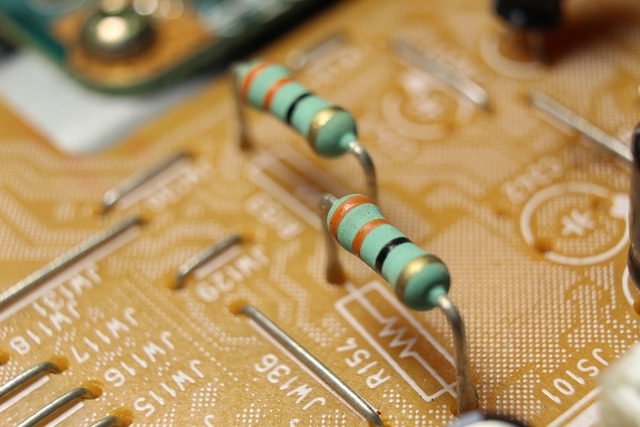Miniaturization, the artistic rendering of large scenes as if they were tiny, has fascinated photographers for decades. By manipulating perspective, focus, and scale, the viewer’s eye is invited to interpret ordinary objects as part of an imagined miniature world. This article explores how to harness camera gear, optical principles, and compositional strategies to create striking miniature images that breathe life into the familiar.
Choosing the Right Gear for Miniature Effects
The foundation of convincing miniaturization lies in the lens. A short‑telescope or macro lens can produce the necessary magnification while maintaining image quality. Telephoto lenses exaggerate depth and compress background layers, which is essential when you want distant elements to appear small and far away. In contrast, macro lenses give you the ability to capture tiny details with razor‑sharp focus. When selecting a camera, a full‑frame sensor offers better dynamic range, but a crop sensor can actually aid miniaturization by naturally magnifying the frame and tightening the field of view.
- Macro lens (50mm or 100mm) for close‑up detail.
- Telephoto lens (200mm+) for distant compression.
- Crop‑sensor body to increase effective focal length.
Composition: Framing the Miniature Narrative
When crafting a miniature scene, framing becomes the story’s first line. Begin by isolating the main subject: a single coin, a droplet, or a leaf. Place it near the lower third of the frame and leave generous negative space around it. This emptiness mimics the void of a tiny world. Use leading lines—roads, borders, or shadows—to draw the eye toward the subject, reinforcing the sense of depth. Additionally, consider the rule of odds: an odd number of elements often feels more natural and invites curiosity, a useful tactic when you want to create an inviting miniature environment.
“The more empty the frame, the larger the world appears.” – Anonymous Photographer
Lighting: Illuminating the Tiny Realm
Lighting is a powerful tool in miniaturization. Soft, diffused light from a large umbrella or a softbox flattens shadows, giving objects a smooth, almost plastic look typical of miniature displays. Alternatively, harsh directional light can create dramatic shadows, emphasizing texture and bringing a three‑dimensional feel. When shooting in the field, the golden hour’s warm glow can add a nostalgic warmth that contrasts nicely with the crispness of close‑up subjects. Using reflectors or fill flash can control contrast, preventing over‑exposed highlights that break the illusion.
Post‑Processing: Fine‑Tuning the Miniature Illusion
In the digital studio, a few adjustments can elevate a raw photo into a believable miniature. Start with sharpening the subject to preserve fine detail. Then, slightly blur the background using a Gaussian blur or lens blur filter to mimic the shallow depth of field that occurs naturally when using macro lenses. Color grading—cool tones for a “toy” look or warm, saturated hues for a whimsical effect—also contributes to the overall mood. Finally, apply a subtle vignette to focus attention on the central subject, guiding the viewer’s gaze as if they were peering into a small world.
Everyday Objects as Miniature Masterpieces
Miniaturization invites creativity with everyday scenes. A solitary spoon on a napkin can transform into a tiny vessel, while a water droplet suspended on a leaf becomes a crystal lake. Street scenes—like a lone traffic sign or a street lamp—can be turned into miniature maps. By selecting subjects that naturally have scale cues, such as coins, buttons, or small figurines, you give the viewer familiar reference points that help them interpret the scene as a miniature. Experimenting with reflections, such as a mirror on a tabletop, can produce an infinite world effect, a favorite trick among miniature enthusiasts.
Common Pitfalls and How to Avoid Them
While miniaturization is a rewarding technique, it can easily fall into pitfalls:
- Over‑exposure: Light is often the enemy of depth. Over‑exposed highlights flatten the image, destroying the illusion. Use exposure compensation or bracketed exposures to maintain detail.
- Misleading scale: Including too many large objects in the frame can break the sense of a small world. Keep the subject the focal point and reduce competing elements.
- Shallow depth of field without intention: A narrow focus can either be powerful or confusing. If you want to isolate a subject, ensure the background is intentionally blurred; if you want a broader scene, consider a slightly longer focal length.
Future Horizons: Miniaturization Beyond Photography
The convergence of optical engineering and digital imaging continues to push the boundaries of miniaturization. Techniques like macro‑zoom lenses, lens‑shading manipulation, and computational photography allow photographers to capture scenes that were previously impossible to render convincingly as miniature. Meanwhile, emerging technologies—such as light field cameras—promise new ways to refocus and manipulate depth after the shoot, opening fresh creative avenues. As these tools evolve, photographers will find themselves with an ever‑broader palette to depict the miniature world, inviting both technical mastery and imaginative storytelling.



